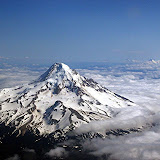Mentor - Flight & Photography: 2 of 4, Urban and Scenic Aerial photos



Mentor
The two most common types of aerial photographs are urban and of structures or scenic. Start with scenic first, then move on to buildings and cityscapes
Aerial photography in a scenic environment is a good way to start . You will be using wide angles, so you'll pick up less vibration. There will be less traffic (but still have a friend help with another pair of eyes), less radio traffic to monitor, and most likely no need to make preflight arrangements with a controlling entity for airspace access or to contact and communicate with a controller during your photo shoot. Also, you will not need to make tight circles, and can spend more time composing and planning your imagery.
When I shoot structures or cityscapes I begin by telling the FSS about my flight plans as they may be aware of any restrictions since aerial photography is different from destination-oriented flights. I plan out my altitudes carefully and while flying I always note at least two places to put the plane anywhere in the vicinity of the photoshoot. If there is any controlled airspace, contact them before entering their area with your request.
A typical controlled airspace call might sound like this: "XYZ control, Cessna ABC, 10 miles south, would like to enter your airspace at 2,000 feet and conduct aerial photography in a three mile radius centered around the downtown core, for the next 15 minutes." A typical response would be "Roger Cessna ABC, request approved, squawk 1234, and advise when ready to leave the area." Then you monitor the control frequency while you set up and conduct the shoot.
Plan your shoot before the flight, and if you have access to it, I find it useful to pre-fly the flight in Microsoft simulator, which helps develop a sense for the area and what you may experience during the shoot.
Onward & Upward! ~ rfb










2 comments:
This is a response I provided to a question posed on iPilot in the forums section, January 8, 2007
~rfb
Red Baron,
Good questions! I've shot with Minolta, Nikon and Canon SLR's and Canon Hi-8 video. Sold Hi-8 video footage of the great early 90's floods to Channel 6 in the Portland Oregon area, and that got national airplay, albeit for seconds.
On still photos, I find 180mm is the max reliable telephoto and 135mm is better. The optical stibilization on the Hi-8 video works like a charm, either that or I have the hand stability of a surgeon and don't know it (ha!).
I find the brightness of the day can counteract lens length, as in the brighter the day the more telephoto you can use without blur. Of course, this is impacted by the higher possible shutter speeds. The higher the shutter speed, the less blur. You might also play around with airspeed/power setting combos. In my old Aeronca, 55 mph was ideal, and in a Cessna 172, about 70-80 mph and 10 degrees flaps and power to hold level seem to do the trick.
For panel shots, the wider the angle you can use without undue line distortion, the better the image, I've found. Panels are hard to shoot. They are vibrating too, and not necessarily in synch with the vibrations picked up by the camera.
Lately I've been using the Canon powershot A80 with very good results; it is the camera which provided the aerial images on my blog. It is a 4 megapixel, I hope to upgrade to at least a 6 or 8 this year.
A question for anyone out there - most of my aerials are locked in Kodachrome slides. There must be an affordable home solution to get those images digital, Anyone know the answer to this?
Rob B.
www.why2fly.blogspot.com
This was a second comment left on iPilot in forums, to a writer wanting more on speeds used. ~rfb
Vigilant,
You make me realize I need to be more clear in my writing, since for aerial photos speed could be shutter, ISO film speed or aircraft speed, which can all play a part. Thanks for that!
Since I was thinking of digital equipment when I wrote, I meant shutter speed, which I cn control, and aperture and (simulated) 'film' speed fall where they will, or if I elect, I can control aperture also in manual mode. I've found over the years shuuter speed to be msot important for aerials; as long as ISO speed falls anywhere in the 100, 200, or 400 range, the photos work out. as for aperture, since just about everything is over 2,000 feet away I just don't worry about it.
I did some experiments with slide film, in the 80's, and found ASA 25 didn't work out so well, but Kodachrome 64 did and so did Ektachrome 200. I liked the light possibilities with the ektachrome but preferred the warmer color tones of the kodachrome to the blue shifts of the ektachrome.
Increasingly, with digital editing and digital file capture, I am only concerned with getting the raw data. As long as I don't have white-out in any area or black-out in any area; as long as detail exists, I can usually draw it out in the edit process.
Rob B.
www.why2fly.blogspot.com
Post a Comment